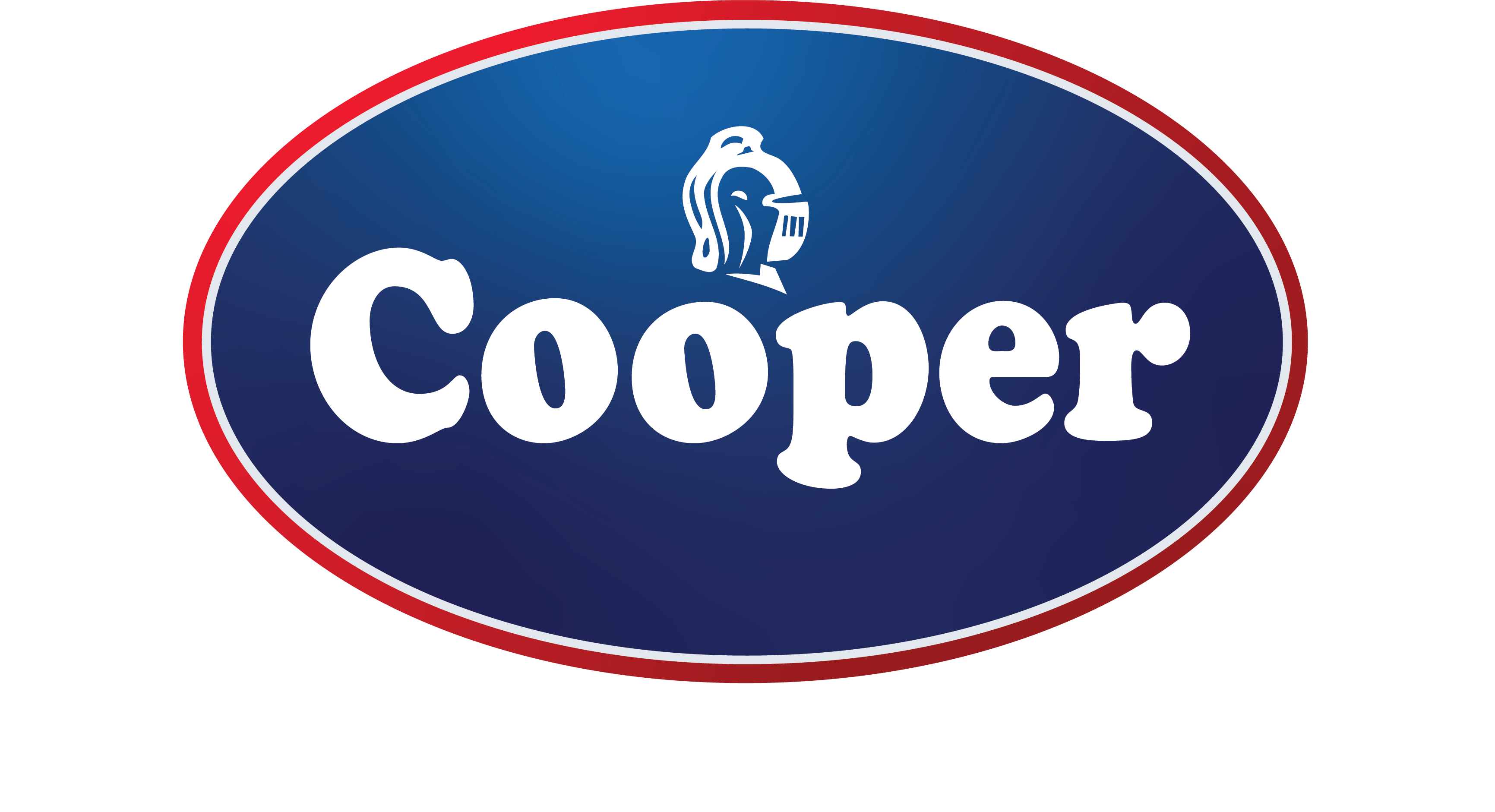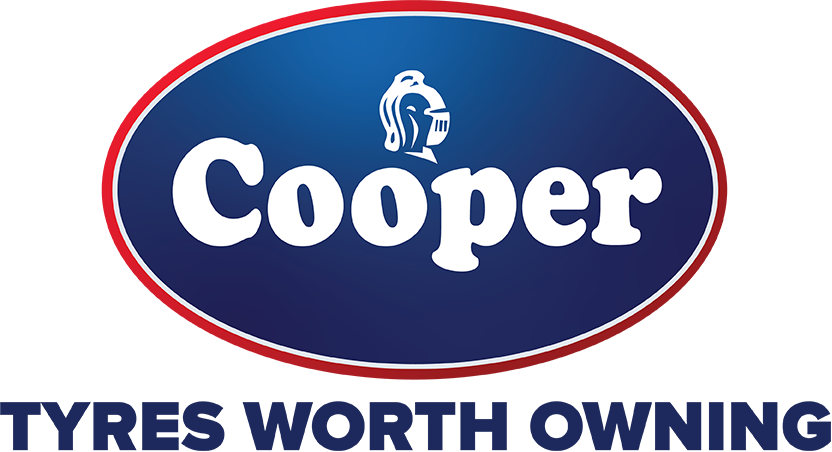Wheeling Abroad – the 2nd half

Day 7
After an amazing few days exploring Etosha National Park it was time to move on, so the first stop was to refuel at the town of Kamanjib. This was the first small town we stopped at and it was an eyeopener. At the fuel station, as you pull up to the pump 4 people surround the car. One at the pump, one filling the car and two cleaning the glass, plus the Owner supervising everyone.
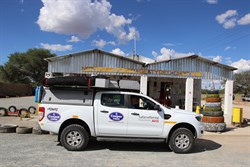
There were also dozens of other people just hanging around. Some additional entertainment occurred across the road with Police intervention on 2 occasions. While this was happening, Ladies in Traditional Himba Dress walked past. Apparently, this is just a standard day. The saying “this is Africa” was starting to make sense.
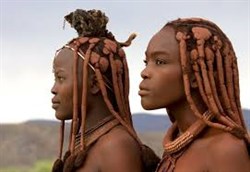
After our resupply, we headed to our next Campsite. It seemed like we were heading out into the wilderness through dry low lying hills. There didn’t seem to be much around to support any form of farming but there was always another group of basic huts and stockyards made of sticks with mainly goats and some cattle. There were people walking down the road in what seemed like the middle of nowhere, all were very friendly.
Small villages were common, where there were signs directing travellers to community camps or lodges. These are fantastic, very well set up with all the features you would. Tourism is the main industry in Namibia, and there is certainly no shortage of great places to stay.
The Hoada Camp was our home for the night and it was spectacular, after turning off onto a goat track we emerged into a stunning camp amongst huge Granite Boulders. The facilities had been built into the landscape, just brilliant.
It got even better as there was a bar and pool built at the top of a group of boulders providing a stunning view. The service and the campsite were outstanding and spotless. We did have to be aware that there were animals about, jackals, baboons and leopards. The main thing is you don’t leave any food or footwear outside your car or tent.
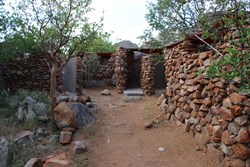
Day 8
We continued west and soon arrived at the Grootberg Pass. This region is stunning and if you have any interest in Geology you will be fascinated. This is one of the oldest parts of the earth and has resulted in a huge variety of rock strata.
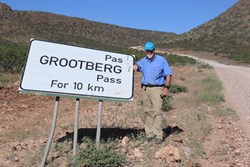
The lines, colours and patterns here are a photographer’s dream. The trouble is that it’s so difficult to capture the scale of this area, the best idea is to see it for yourself. I’ll certainly be coming back.
Descending the pass we headed toward Khowarib and one of the real highlights of the trip, we visited a small village pre-school. The teacher, Loretta, is a truly wonderful lady. She is not paid for her time. It was nice to be able to donate bags of maze, powdered milk, pencils, books and basic toys.
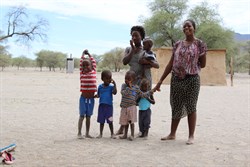
Tennis balls were a real hit with the little kids. The brilliant thing about this is that everyone here was so happy, huge smiles everywhere.
We now headed towards the Hoanib River. This is a huge mostly dry river that has carved out a massive valley, huge volumes of water occasionally run through here after major Rain , mostly the water runs underground all the way to the coast. After about 25km of Sand, Bulldust, River Rocks and more bulldust we arrive at The Elephant Camp, this remote camp had been set up on a bend in the river, it is remote and the landscape reminds you of this. Unfortunately, it had to be abandoned due large numbers of Lions taking an interest in the place and becoming a real threat to the lodge.
After lunch we continued down the valley and had an encounter with Quicksand. The 1st car got through but the 2nd stopped and sank to its belly. Now having a car bogged is not a big problem, it took some time, Maxtraks and some aggressive driving but we made it out. The interesting addition to this recovery was that we were surrounded by 2mtr tall bulrush’s, so not much vision. The concerning bit was there we’re fresh Lion prints, big ones, in the river bed, lots of them. There was a pride of lions close by, something you don’t have to think about in Australia. We survived, but our guide was very nervous. We were scheduled for a bush camp tonight, in the riverbed but because of the lions and it was getting late, we headed back up the valley to another community camp. On the way we found some huge areas of bulldust up to 500mm deep. This stuff is amazing, it as fine as talcum powder, flows like water but throws the car about like deep mud ruts. Not much control over the vehicle and visibility is zero as it covers the windscreen. Bad luck if you have a window open!
On the way to the Ongongo Community Camp we drove through the village of Warmquelle. Eventually the Campsite emerged, it was a little crowded as they we expanding and upgrading the facilities but here was a fantastic pool complete with a Waterfall. It was definitely nice to have a swim. Tomorrow we plan to visit a traditional Himba Village and see how they have lived for thousands of years.
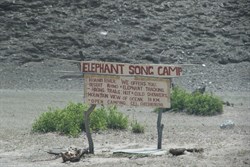
Day 9
As we start heading towards Himba Camp, we get word that they are having a village meeting and have cancelled our visit. This is disappointing as these arrangements had been made well in advance. At the end of the day, the village is more important than a few tourists from Australia so we moved on.
Today we travelled through some low hills, river valleys, Dune Fields and simply amazing scenery. Some of the sand drifts have been pushed 3-400 metres up the sides of the mountains. Vic and I wanted to turn off the road and get a closer look at these but had to be patient. This was really hard as the terrain just got better and better as we went on.
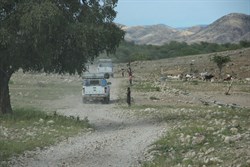
This place just keeps surprising you, as Huts and Livestock kept appearing in the most unlikely places.
We kept driving and you guessed it, every turn opened up more amazing terrain.

As we approached the Purros Community Camp, the Village emerged out of the sand. The most amazing thing was the Manchester United Bar and Store. We had no choice, we had to stop for a Beer.
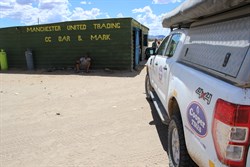
I’ve said this before, but this is a great place.
Tonight’s camp is in a wide River Bed and is special as it is frequented by elephants. There are signs here warning you not to leave any food out as the elephants regularly walk through camp and will help themselves. This could be seen by the footprints where my tent went and a huge pile of dung 15 metres away. Unfortunately for us the elephants didn’t turn up that night but, there were fresh lion prints only 20 metres away in the morning. Makes you think about getting up in the middle of the night.
Day 10
After everyone looked at the lion prints and made sure no one was missing, we headed out to play in the sand dunes for a while. They had a green tinge when seen from a distance but up close there was a very fine covering of grass, all the desert needs is a bit of water and it’s transformed. There were no tracks here so we headed into the dunes and made some, first tracks are always fun and it will only take a day for them to be covered again.
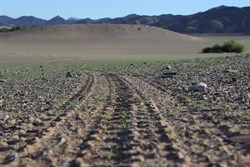
We headed down a very narrow river valley with stunning rock strata on all sides that just kept going for hundreds of kilometres. We all thought these rivers are dry and only flow after rain, but they’re still very active as all the rivers in this area of Namibia run underground for most of the time, even at the coast they emerge underground into the ocean. It was surprising to me to see a giraffe in these conditions, there was also lots of evidence of rhinos in the region, unfortunately, we didn’t see any.
In the afternoon, the landscape changed from river valley to vast Stoney plains full of brick sized jagged rocks for as far as you can see. This continued for hundreds more kms as we headed south.
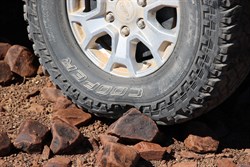
This was to be our Campsite for tonight, in the middle of a Stoney desert, with lots of wind and not much space to set up my Tent. All things considered, it was a great camp. We were surrounded by storms and some amazing cloud formations but didn’t get rained on. We heard some animals close by during the night but unsure what they were. Rhino was a possibility we hoped, but most likely hyena or jackal’s, either way they didn’t cause any concern.
There was an impromptu party tonight, no reason, it just happened.
Day 11
Today we continued through the Rocks. Rocks and Rocks and Rocks. There were quite a few. The scenery was still stunning as there were a few river beds to cross and the mountains started to close in. The strata in the cliffs showed where all the rocks came from and the incredible geological forces at play over millions of years. This area is part of the oldest area of Africa and was here even before the continents broke up. I found it fascinating reading about how it was all formed.
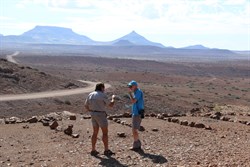
Our guide Dave, showed us some very strange plants that are only in this area and can be several thousand years old.
Slowly we drove out of the Stoney Desert region and made our way to Palmwag and our campsite at the lodge. We were back in some luxury as the facilities here are great. Although directly across from our site and between us and the facilities, was a large fresh Game trail made by elephants.

The restaurant here was very impressive, all the local delicacies. I had a Zebra Steak with Kudu and Springbok, all extremely good. Definitely different from the Camp food we’ve been having. Some luxury is always appreciated.
Day 12
Driving conditions were generally very good, nowhere near as rough or varied as in Australia, but they had taken its toll on some of the vehicles. When we picked up the cars from Avis, they explained there was a big difference between the South African and Namibian built vehicles. The attention to detail was vastly different. We had several things that needed fixing.
Two fridges had stopped, solar panels had come loose but the main concern was that two of the canopies had broken away from the mounts, if it wasn’t for the rooftop tent one of them would have fallen off. This was not good as we still had a long way to go. Dave, our guide, contacted Avis in Windhoek and they arranged for someone to meet us, so after some basic repairs we changed our route and headed towards Henties Bay and the Skeleton Coast.

We were still up in Desert country with a slowly changing terrain from Rocks to Broken ground rolling hills and sand dunes. As we got closer to the coast, we realised that the desert conditions went all the way to the coast.
All along this section of the Atlantic Ocean is where the Antarctic Current runs and this means the water temperature is about 8 degrees all year. This has meant that for millions of years very little rain falls in the western area of the country and this has been what has caused the deserts to be formed. It also means that every morning a massive sea fog rolls over the land. It travels around 200km inland and dissipates mid-morning on most days.
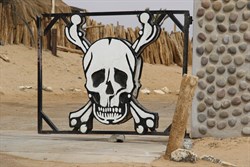
We continued to the coast and turned South, soon we found the gates to the Skeleton Coast, these were right out a Pirate story. Very impressive. At the gates, there were many bones of an assortment of sea creatures, whale, seal as well as giraffe and elephants.
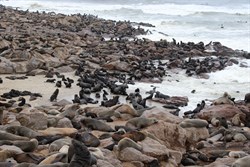
There are lots of shipwrecks alone this coast as well as some abandoned oil rigs and apart from lots of great beach fishing, not much else. However, there is a massive seal colony at Cape Cross and as long as you can stand the stench, and I mean it’s really bad, it’s an experience to see. There are over 2 million seals in this area and they are everywhere. You walk through them to get to the viewing platform and if you want to use the picnic tables, forget it.
Our camp tonight was at Henties Bay, a good sized modern town with another great campground. The manager from Avis was waiting for us at camp with everything needed to fix the cars including two new fridges. He set to work and did a great job, he basically dismantled the vehicle he was driving and swapped out all the broken parts, this included a window control that was broken in my car. One car had a flat tyre and another with sidewall splits, they should have been running Cooper tyres, so it was arranged to get two new ones fitted.
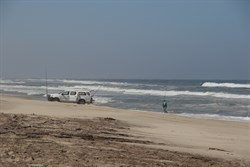
Our site had been swept clean, private facilities and a security guard at the gate. The campground was within walking distance of the best seafood restaurant I’ve been to and this led to an impromptu party which turned into one of those nights. Most of us swaggered home well fed and watered.
Day 13,14,15
After a late start the next morning, we continued down the coast to Swakopmund, this is the largest city on the coast, so this meant we had a Motel room for the next 2 nights. This gave us the chance to re-supply, do some washing, look for some souvenirs and relax for a while. Our room was on the top floor and had great views over Atlantic Ocean and a huge Pier. This is a major tourist attraction as it goes out about 1km into the bay. There is a great restaurant at the end and provided some great food. It was interesting as the whole pier moved as the waves crashed around it, we were reassured that this was part of the design and it wasn’t going to fall into the ocean. At 8 degrees, I really didn’t want to go swimming.
There were also some impressive antique stores here, they had an assortment of traditional African as well as a large variety of German origin. Namibia was controlled by the Germans for many years so there is a rich heritage to be found here. German is a common language spoken here.

The next day we drove south for 30km and went on a Quad bike tour into the sand hills, this was fantastic as these Dunes go for hundreds of kilometres, about 500km south and 200km East – pure sand as far as you can see. These are very mobile dunes and can move up to 6m/yr. In some areas, they move over a clay base and as these are exposed they reveal 2000yr old footprints, human and a large variety of animals.
This area is also a burial ground and there are large numbers of graves here. They are marked by pottery fragments and shell beads. Our guide, Farnie, has a great respect for these remains and won’t show them to everyone, we were fortunate. He has worked closely with several universities to document these sites and preserve them. We spent 6 hours riding around the dunes, it seemed that we only spent 5 min there. To say we all had a great time is an understatement.
At the end of another interesting day we returned to Swakopmund and dinner in a tent on the beach. The driveway was deep soft sand, so there were always cars bogged, interesting start to a night out. It certainly had different atmosphere.
Having refuelled and resupplied, we headed south to Walvis Bay then west towards Kuiseb Pass. This is a spectacular road up some very steep hills, you need to concentrate as if you happen to run off the road here, it’s a very long way down. Great views from the top. We soon turned south and crossed the Tropic of Capricorn, at this spot we met a car load of French Travellers doing a similar trip and having just as much fun. We had lunch, exchanged stories and photos and invited them to visit Aussie and make sure they look us up when they get there. It’s great to meet other travellers.
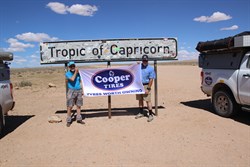
Our next mission was to get to Sesriem for afternoon tea. This place, a pub and a few buildings, has a reputation for exceptional Apple Strudel and real coffee. We had about 225km to go so we headed off with a purpose. It was definitely worth it; the Strudel was huge and worth the drive.
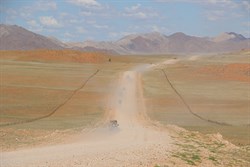
After a great feed, we headed to one of the highlights of the trip, the Sand Dunes of Sossusvlei. After a hasty set up at the camp site, Vic and I, the only ones from the group, headed the 50km into the National Park and rewarded with incredible views of massive Dunes. We arrived in time for sunset and watched the colours emerge over the sand – stunning is all you can say. There were storms in the distance, so the Rainbow just added to the vista. With sunset gone, we headed back, almost hitting a very large Kudu Antelope, this was the first of hundreds we saw close to the road.
Steak over the campfire was dinner tonight with a clear sky and millions of stars. It’s always good to sit around the fire and solve the worlds issues. We determined that our guide, Dave, needs to visit Australia and see what real 4wdriving is all about, also get exposed to all the deadly creatures here. Also, that South African Rugby has issues and the Zulu’s have full control of the country, we left it alone after that and conversed on regular stuff. There were plenty of Jackals prowling around the camp so we had to make sure nothing was left out. I caught our guide leaving bones and leftovers around the camp to encourage them to come closer, they are the size of a small dog and very timid and didn’t cause any issues.
Day 16
Again, Vic and I we’re up before Dawn and drove back to the Dunes. The lack of sleep was worth it as sunrise was spectacular. These dunes are huge, up to 450mtrs of pure sand with sharp ridgelines that just keep going. The largest, called “Big Daddy” takes at least 2 hrs to climb for someone fit enough to try. I’m not, so I didn’t. We found another smaller one to attempt that no one was even looking at, so we had the dune all to ourselves. The sand is really soft, so for every 5 steps forward, you go back 4, hard work but we made it to the top eventually, it was only 150mtrs tall but the ridge was 1km. The sides of the dune are very steep, to the point that as you walk it creates mini avalanches, some will run all the way to the base of the dune.

The wind was starting to pick up and picking up the loose sand. Our footprints on the ridge were soon covered up and the knife edge soon reappeared. The sand was starting to sting my legs and get onto the Camera, so it was time to get back to the car. I took the shortcut down the face of the Dune. This was great as each step would slide you mtrs down the slope creating a huge avalanche in front of me, I sank to my knees on every step nearly falling over, but so much fun. What took an hour to climb, took 2 minutes to descend.
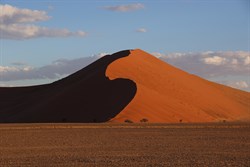
It didn’t matter which way you looked, the surrounding views just kept getting better. Really, the only way to appreciate what these dunes look like is to see them yourself, they are simply stunning, pictures don’t do them justice but I’ve included a few attempts. The early start meant we had to get back to camp for breakfast and pack up and a long day ahead, but no complaints.
Day 17
After breakfast, we backtracked to Sesriem for morning Tea, good coffee and pastries really hit the spot. No-one wanted to leave here as it was such a welcoming place, but today is a transport day and we had a few Km’s to travel, so off we went. Solitaire was the next town then a good winding track up the mountains to our overnight stop at Namibgrens Camp. There was something very familiar about this place, it could have been anywhere in Australia as there were Gum Trees everywhere.
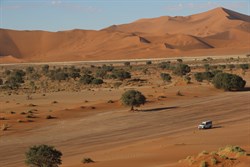
It still had the high electrified fences surrounding the property but just the way the homestead and yards were set out, it seemed Aussie in nature. Anyway, we wound our way for about 5 km to another surprising campsite. This was situated amongst Granite Cliffs and Boulders, had a swimming pool, huge Fire Pit, Common Dinning area under a huge Tent, Hot and Cold water at the Sink and showers open to the sky. In other words, exceptional. I must admit that the Camps in Namibia are far superior to most here in Australia. The location helps, but just the way they ae set up is brilliant. It’s unfortunate that our Building and OHandS Regulations wouldn’t allow for some of these. There was nothing unsafe, just very creative.
As this was our last night Camping we started early with Drinks and food, this continued well into the night, Dinner was an assortment of what we had left, so I cooked up some Roast Beef and Potatoes. Others had Smoked Salmon and Zebra Steaks. A few bottles of wine and Beer appeared and the night developed into quite a celebration. The campfire was very welcome and as usual became the centre point of the trip. We went around the group and everyone talked about the best part of the trip. This included the amazing Animals, Campsites, Desert Landscape and for me the Huge Sand Dunes. The great thing here was that there were 12 different things mentioned and everyone agreed that it had been a huge trip and a very positive experience and as with all holidays, was coming to an end all too quickly.
Day 18
So, our last day has arrived and before breaking camp we gather up all our unused food and supplies. There is quite a lot from 12 people as you would expect. I assumed our guide would collect all this and use it for the next trip, but I was wrong. He gathered up all the local workers at the Camp and gave all the food to them as a small gesture for all the work they do. They were so appreciative of this and didn’t stop thanking us, from our perspective it wasn’t much but from theirs it was a huge windfall. The locals are so humble, always willing to help and make sure we had everything we needed. They have great pride in their land and if you can spend time with them their knowledge of the land is remarkable. It was such a rewarding learning experience.
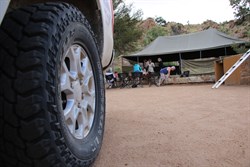
As this was our last camp, we had to sort out all the camping gear, make sure everything was clean and packed in the appropriate boxes. Luckily, we had check lists as some of it belonged with the vehicles and some to our guide. Amazing, nothing lost or broken.

As we waived goodbye to the staff at the camp, we turned North for Windhoek and the last part of our Safari in Namibia. There were still plenty of animals to be seen, mostly some very cheeky baboons and some huge birds’ nests on top of the power lines.
The roads were still gravel, in fact about 95% of all roads in Namibia are gravel with only the major cities and towns having any bitumen and basically only one highway.
So, after 4000km driving through some of the oldest parts of the Earth, we arrived back at our starting point, Windhoek. There were lots of mixed feelings here as we went directly to the Avis Depot and went through the process of handing back our vehicles. These had been our home for the past 3 weeks and (as you do) we had become attached to them. It also signalled the end to this part of the adventure, suddenly and abruptly. Anyway, there was no damage to the vehicles or equipment.
My S/TMAXX tyres came through unmarked with no visible wear while the other vehicles all showed signs of wear and tear plus two other-brand tyres had to be replaced during the trip.
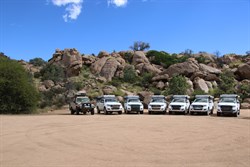
The boys from Avis took us back to the Country Club where showers, beds, bars and restaurants awaited. It was now time to repack all our gear, get ready for one last group dinner, make some speech’s, Drink to everyone’s continued good health and safe travels. It was yet another great night out with a bunch of people that have had a fantastic adventure. There were no disagreements on the trip, apart from the usual domestics, everyone had the same goals and everyone had a great/fantastic/brilliant time.
As we were all heading in different direction from Windhoek at different times the following day, we all said our farewells and prepared for the next part. Tomorrow, I head for Victoria Falls in Zimbabwe and hopefully more adventures.
